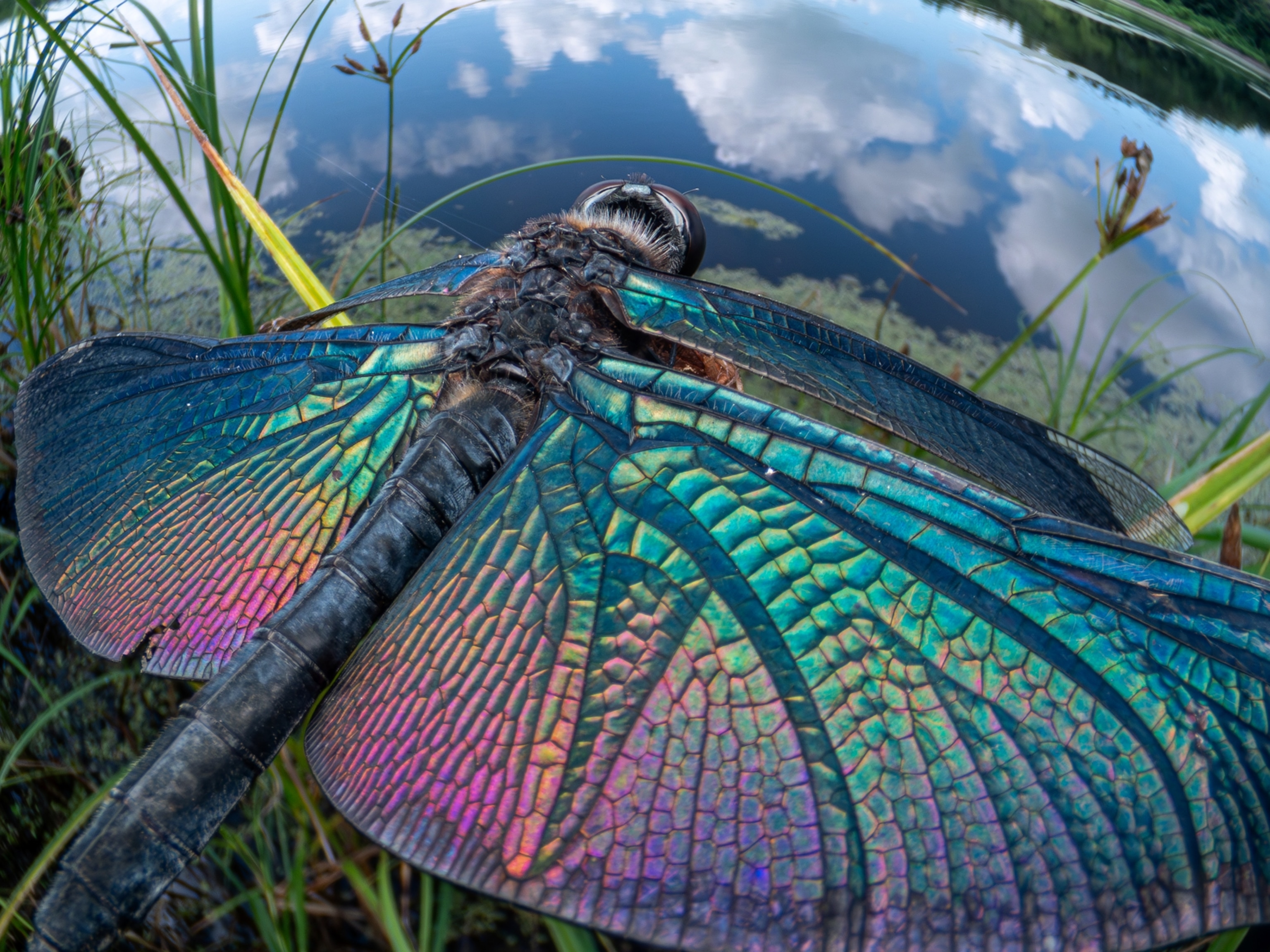A previously unknown population of vampire moths has been found in Siberia. And in a twist worthy of a Halloween horror movie, entomologists say the bloodsuckers may have evolved from a purely fruit-eating species.
Only slight variations in wing patterns distinguish the Russian population from a widely distributed moth species, Calyptra thalictri, in central and southern Europe known to feed only on fruit.
When the Russian moths were experimentally offered human hands this summer, the insects drilled their hook-and-barb-lined tongues under the skin and sucked blood.
Entomologist Jennifer Zaspel at the University of Florida in Gainesville said the discovery suggests the moth population could be on an "evolutionary trajectory" away from other C. thalictri populations. This is the second population of vampire moths Zaspel and her team have found. They discovered the first in Russia in 2006.
Next January, she will compare the Russian population's DNA to that of other populations and other species to confirm her suspicions.
"Based on geography, based on behavior, and based on a phenotypic variation we saw in the wing pattern, we can speculate that this represents something different, something new," Zaspel said.
"But it is really difficult to say without knowing genetic differences between individuals in that population, and among individuals from other populations, how different this group is going to be."
(Zaspel's research is funded in part by a grant from the National Geographic Society's Committee for Research and Exploration. National Geographic owns National Geographic News.)
Blood Feeding
If it turns out that Zaspel has indeed caught a fruit-eating moth evolving blood-feeding behavior, it could provide clues as to how some moths develop a taste for blood.
Some researchers, she noted, hypothesize that blood-feeding in insects and animals evolved from behaviors such as feeding on tears, dung, and pus-filled wounds.
"We see a progression from nectar feeding and licking or lapping at fruit juices to different kinds of piercing behaviors of fruits and then finally culminating in this skin piercing and blood-feeding," she said.
Chris Nice, a biologist who studies butterfly evolution at Texas State University in San Marcos, said few butterfly and moth species are equipped with the hook-and-barb-lined tongues needed to pierce fruit.
"The fruit-piercing stage in the first place sets the stage, in a morphological sense, for further transitions into, in this case, the blood-feeding," he said.
Nice added that genetic research such as Zaspel's is the only way to test ideas on how certain behaviors evolve.
Sexual Gift?
The next question is why this Russian population of C. thalictri appears to have evolved blood-feeding behavior, Zaspel said.
Only male moths exhibit blood-feeding, she noted, raising the possibility that as in some species of butterflies and other moths, the Russian moths do it to pass on salt to females during copulation.
"There is no evidence it prolongs the life of the male, or anything like that," she said. "So we suspect that it is probably going to the female."
The sexual gift, she said, would provide a nutritional boost to young larvae that feed on leaf-rich, but sodium-poor, diets.





